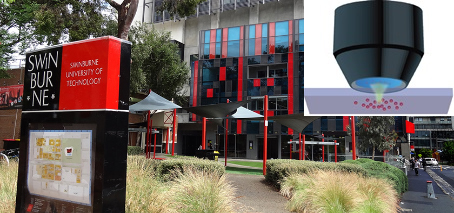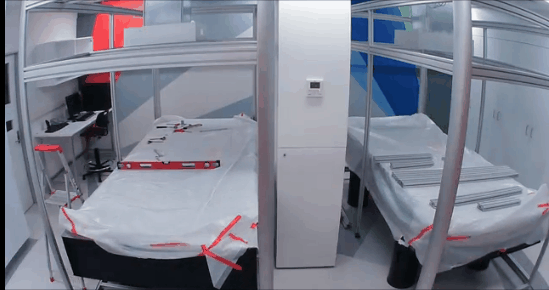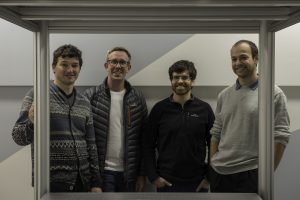Bridge between microscopic and macroscopic behaviour
A new quantum-gas microscope facility at Swinburne University of Technology will allow studies of ultra-cold atomic gases, giving researchers the ability to image and manipulate single atoms.
The facility will allow study of quantum effects at a macroscopic scale: a major unsolved issue in physics.
To harness the full potential of such quantum materials, we must grasp the underlying physics connecting the microscopic and macroscopic quantum worlds. The quantum-gas microscope will help bridge this gap, using the highly controllable setting of ultracold atoms.
The new microscope will be a critical resource for diverse FLEET experiments, ranging across multiple research institutes including Swinburne, Monash University and ANU.
Postdoctoral researcher Dr Carlos Kuhn has been hired within Prof Chris Vale’s Swinburne ultra-cold atomic gas group to help construct and operate the new facility.

FLEET postdoc Carlos Kuhn has been hired within Chris Vale’s ultra-cold atomic gas group to help construct and operate the new facility
The facility’s ability to image single atoms will greatly facilitate studies of the non-equilibrium, many-body quantum systems that are key to FLEET’s Research theme 3, in which clouds of atoms pushed temporarily out of equilibrium provide crucial insights into fundamental physics.
Fundamental discoveries made from observing the transition of states will inform FLEET’s search for electronic conduction without wasted dissipation of energy.
One of the most exciting international directions in atomic physics, quantum gas microscopy, offers the unique possibility to simultaneously control and measure both the microscopic and macroscopic properties of a many-body quantum system.
A quantum gas microscope combines a cold-atom experiment with a high-resolution optical microscope capable of resolving images of the order of ultracold gas atomic wavelengths – ~500 nm.
The new apparatus will use clouds of dysprosium (Dy) atoms, the large magnetic moment of which allow for long-range dipolar interactions.
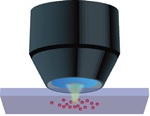
Atoms trapped in microscope’s focal plane emit laser-induced fluorescence, imaged by CCD camera
These long-range, dipolar interactions provide a whole new regime of interactions with which to engineer topological states for dissipationless transport.
The quantum gases studied with the microscope can be thought of as synthetic two-dimensional materials: atoms confined to move in a 2D plane. Within this lower-dimensional environment, quantum effects emerge that are not found in 3D.
The quantum-gas microscope will allow atom-by-atom synthesis of tailored, many-body states with novel topological properties.
The new facility represents a paradigm shift for experimental ultra-cold atomic physics in Australia, with complex and expensive experiments performed by multiple researchers from a number of different cooperating institutions. Australia’s strong expertise in ultracold atoms will be leveraged to build a quantum-gas microscope versatile enough to serve a broad cross-section of the national research community.
This proposal brings together FLEET researchers from the disparate fields of cold-atom and solid state physics, who will use this facility to understand the roles of impurities and dissipation in topological matter. Synthetic topological insulators built using ultracold atoms will provide insight into solid-state topological materials used in future electronics.
Chris Vale (Swinburne University of Technology), Kris Helmerson and Meera Parish (Monash University) and Matt Davis (University of Queensland) will create a quantum-gas microscope to study degenerate Fermi gases and Bose-Einstein condensates formed of ultra-cold dysprosium atoms, studied as part of FLEET’s research theme 3, light-transformed materials.
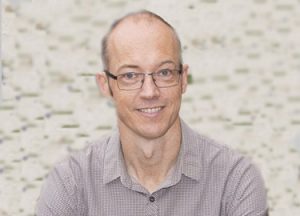
“This next-generation facility will allow Australian researchers to control and image individual atoms in ultracold gases, paving the way for new discoveries in quantum technologies.”
Chris Vale, Swinburne University of Technology
Chris will take the lead in facility development, consulting with other CIs. His team will use the microscope to research driven topological matter within FLEET’s Research theme 3.
The microscope will allow both control and imaging of individual atoms in a quantum gas – providing an essential bridge between microscopic and macroscopic behaviours.
The microscope allows imaging and control of not only the complete (macroscopic) system, but also allows observation of the behaviour of individual atoms.
“With this facility we will use atomic systems to test, at a quantitative level, theoretical models believed to capture the physics of more complex solid-state materials”, says Carlos Kuhn.
Such discoveries will help inform research in other FLEET themes, and FLEET researchers will use the facility to explore new avenues for creating dissipationless topological matter synthesized atom-by-atom.
Other Swinburne-based researchers on the microscope development team are Dr Sascha Hoinka (ARC DECRA and FLEET research fellow), FLEET AI Dr Paul Dyke, and postdoc Dr Ivan Herrera.
FLEET researchers have established collaborations with Prof Tilman Pfau (University of Stuttgart) and Prof Wolfgang Ketterle (MIT) to learn the new skills that will be required in working with ultracold dysprosium atomic gases.
Funding was approved under Australian Research Council LIEF grant ARC LE180100142 (November 2017). In all, the ARC’s November funding round included $33.5 million of funding for research from cochlear implants to megafauna extinction. See the ARC media release for new infrastructure and facilities (LIEF).
Along with a new materials characterisation facility at Monash and RMIT, the new quantum gas microscope formed part of almost $4.6m of new research funding going to projects and facilities led by or involving FLEET researchers, or directly contributing to FLEET’s search to develop ultra-low energy electronics and boost related areas of research.
For more information:
- Professor Chris Vale, cvale@swin.edu.au, Swinburne University of Technology
- Follow FLEET at @FLEETCentre
- Visit FLEET.org.au
- Watch: Future solutions to computation energy use
- Subscribe to FLEET news FLEET.org.au/news
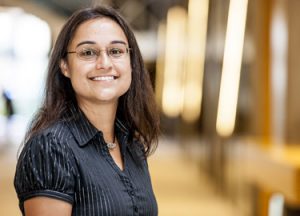
Meera Parish (Monash) will use the facility to:
* experimentally verify many-body system theories
* study effects of impurities in large quantum systems

Matt Davis (UQ) will use the facility to:
* research microscopic and macroscopic properties of nonequilibrium superfluids within FLEET’s Research Theme 3.
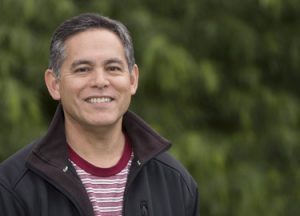
“Technological innovation is driven by basic science. Cold-atom science is a frontier area generating breakthrough understandings of quantum phenomena in macroscopic systems.”
Kris Helmerson, Monash University.
Kris will use the facility to:
* study 2D Bose gases and superfluid turbulence at the single atom level
* study dissipation in nonequilibium systems

